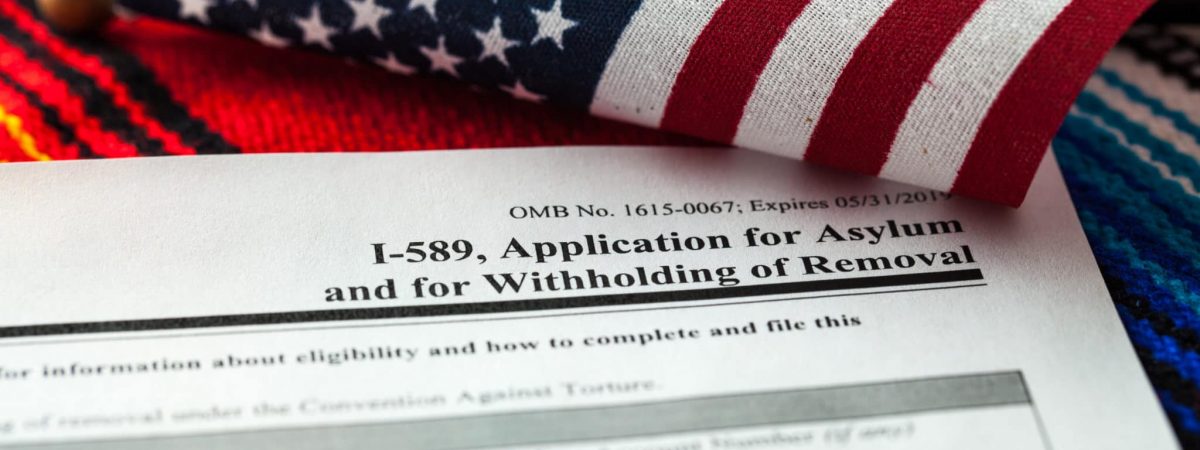For generations, seeking refuge in the United States from persecution, violence, and war has been part of America’s policy towards fleeing persons from across the globe. Global conflicts, natural disasters, and harsh conditions have, throughout history, prompted the migration of peoples from one place to another. Applying for asylum and refugee status can be an overwhelming endeavor and it’s why we’re here to help! In this month’s post, we look at some of the history behind U.S asylum laws and some recent changes that you need to know.
The idea of persecution is not entirely foreign to America. After all, many of the early settlers to these lands were fleeing religious persecution and searching for a better life. U.S asylum laws have a complex history and have changed over time. In the country’s early history, people seeking asylum and immigrants were largely put in the same category. Millions of Europeans came into the U.S as oppressed religious minorities but there was not necessarily a category to differentiate between them and other immigrants. Federal immigration restrictions did not begin until the Page Act of 1875. The Chinese Exclusion Act that focused on Chinese workers and criminals.
The Quota System During the 20th Century
Early in the 20th century, Congress passed strict quotas that limited the number of Jewish or Catholic immigrants from European and Eastern European countries. Immigration policy follows, to a certain degree, public sentiment and many Americans were not yet fully aware of Hitler’s persecutions. During World War II, many Jewish refugees fleeing Nazi Germany were denied entry due to the quota system. The aftermath of World War II and the revelations of the horrors of the holocaust and other displaced peoples, led to changes in American policy. After the war, about seven million people were displaced. It was at this time that the U.S drafted the first formal refugee and asylum policy called the Displaced Persons Act of 1948. During this same time, the U.N created an official definition for refugees. This would eventually lead to the U.S adopting the Refugee Act of 1980.
Asylum seeker: An asylum seeker is looking for international protection. An asylum seeker is someone seeking protection but still waiting for the process of being decided by the country they applied to. Not all asylum seekers will be considered refugees but all refugees were first asylum seekers.
Refugee: The U.N defined a refugee as any person that could not return to their home country for fear of being persecuted for reasons of race, religion, nationality, membership of a political group or political opinion.
Under the Refugee Act of 1980, many people fleeing communist countries would receive asylum, as well as people from Central America and other Latin American countries. In recent years, the uptick in violence in these regions has driven up the numbers. Domestic violence fueled by drug cartels and drug wars continues to heighten desperation among many people that live in fear of their lives and this has driven a lot of people out of those countries.
Under U.S International Law, a person who steps on U.S soil can technically apply for asylum. Immigration authorities will then determine how credible your plight is. Today, America leads the way in worldwide refugee efforts. The influx of Central American people across Mexico and towards the U.S stirred up quite the response in the past years. This movement of people has drawn a lot of attention and created some backlog in the system, causing people to have to wait longer for a response.
Changes in Asylum Law and Temporary Changed Due to Pandemic
The current administration has responded to the growing numbers with some changes that might make it difficult for some. The changes will mean that a person’s application will take into consideration whether the person passed through another country on their way to the U.S. The rationale is that if a person passed through another country, they should seek refuge there before attempting to come into the United States.
Since the beginning of the Covid-19 pandemic, there have been some serious slowdowns of some of these procedures. Immigration hearings have often been postponed, refugee admissions halted temporarily, and immigration also postponed. Also:
- Travel restrictions for people coming in from the U.S and Canada have been extended.
- Temporary amendments to visa requirements for foreign workers
- Concerns about Coronavirus have led to the release of people from custody due to concerns of the spreading the disease
Looking for Asylum or Refugee Status?
If you are looking for asylum or refugee status, having an attorney at your side will help you navigate the deep water of some of these changes and regulations. The history of the laws shows that external circumstances do change policy. In this case, coronavirus has made it difficult. It’s why we encourage you to talk to a trusted attorney to guide you through. Call us here at Winterberg Law Firm today.

